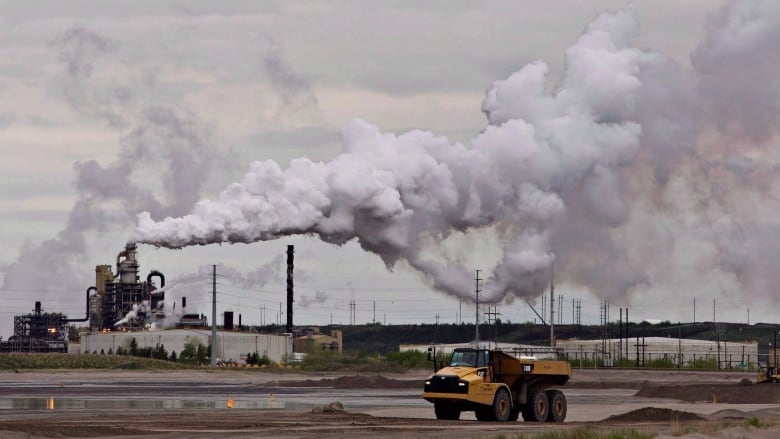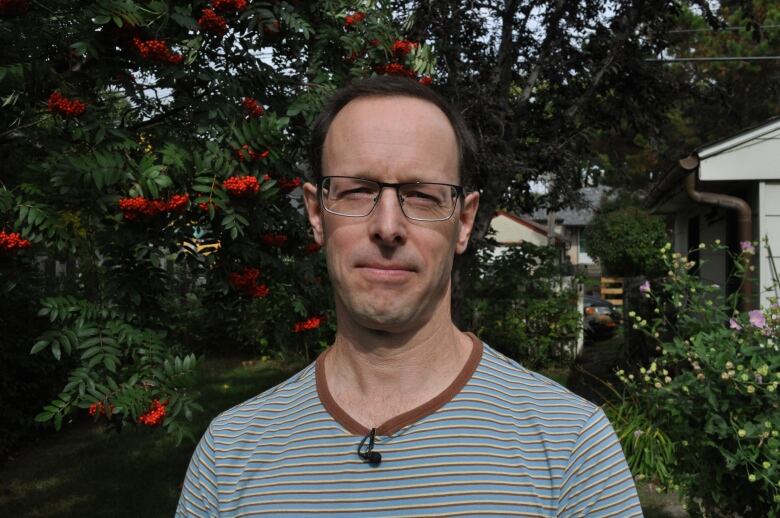Scientists sound alarm over Alberta's new approach to tracking oilsands pollution
For the 3rd time in 5 years, the Alberta government is changing how it monitors oilsands emissions

The scientist who once oversaw the science division of an independent agency keeping tabs on the impact of industrial pollution in Alberta is leaving the province and speaking out about the politics that he says has come to permeate Alberta's petroleum-based economy.
Bill Donahue sayshe fears the quality and depth of environmental monitoring in the province will continue to decline, imperilling the public's understanding of potentially harmful pollutants produced by the oilsands and related industries.
Last week, staff at Alberta Environment and Parks were informed that the Environmental Monitoring and Science Division (EMSD), which Donahue once helped lead, was being dissolved and rolled into a new structure. A stand-alone climate change office will also disappear.
"In my experience, it'll result in significant disruption of programs. Possibly more cuts in budgets. Lack of focus. Fractured scientific leadership. That sort of thing," Donahue said in an interview with CBC News.
"If you don't have adequate or appropriate monitoring, you won't ever be able to tell whether your decisions are effective, whether policies are achieving their goals."

Donahue said environmental monitoring in Alberta had already been weakened under the previous NDP government, which eliminated the independent Alberta Environmental Monitoring, Evaluation and Reporting Agency (AEMERA). Donahue, who has a scientific and legal background, was also vice-president and chief monitoring officer at AEMERA.
Failure to properly monitor led to global scrutiny
The province was pushed into establishingan independent agency in 2014 after a team led by University of Alberta scientist David Schindler found that pollution from the oilsands was not being properly detected, leading to widespread criticism from environmental organizations.
Schindler, now retired, saidthat as the oilsands were being developed in the 1970s and '80s, Progressive Conservative governments constantly reassured the public that there was no problem with pollution. When he and a group of scientists conducted their own independent research, they found that government monitoring had been ineffective and politically influenced.
"The problem in the past has been that the political thumb has been on the science, ensuring that there was never adequate science done," he said.
The new structure that has government overseeing monitoring threatens to tip the scale back to the past,Schindler said.
"Anything that could possibly be wrong in the oilsands is now subject to political censorship, so that the public at large will not know whether what they'rehearing is straight propaganda or the truth."
- Oilsands monitoring needs scientific rigour: panel
- Alberta, Canada launch joint oilsands monitoring system
- Environment minister defends dismantling arm's-length industry monitor
Because Alberta's economy is so dependent on oil, governments of all political brands have been boosters of the industry. Premier Jason Kenney, elected last April, is currently in the U.S. trying to attract new investment in the province's oil business.
A key part of his messaging is that Alberta produces the cleanest, most ethical heavy oil in the world. Among Kenney's first moves as premier was to establish a "war room" to challenge news stories and battle critics of the industry. He's also set up a $2.5-million public inquiry to investigate foreign funding of groups opposing the oilsands.

Donahue saidhe finds it telling that the Kenney government is spending more on battling opposition to the oilsands than it is on monitoring its environmental impacts.
"I guess that tells me where the priority of monitoring and science is," he said."If you put more money into attacking environmentalists and, you know, chasing these conspiracy theories and probably disinforming and misinforming the public than you do putting it into programs that actually reveal whether or not there are actually significant problems, that needs to be addressed or mitigated."
Alberta Environment Minister Jason Nixon was unavailable for comment. But in a statement sent to CBCNews, his department said the reorganization will make oilsands monitoring more effective.
The new division "will allow for increased collaboration and capacity among scientists working on fish and wildlife, environmental monitoring and science, flood forecasting, cumulative effects modelling and other areas," it said.
The Alberta government says it has no intention of reducing the amount it spends on monitoring, which was about $20.4 million last year under theEMSD. The federal government and the oilsands industry also contribute to monitoring












_(720p).jpg)


 OFFICIAL HD MUSIC VIDEO.jpg)
.jpg)



























































































